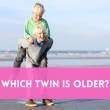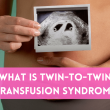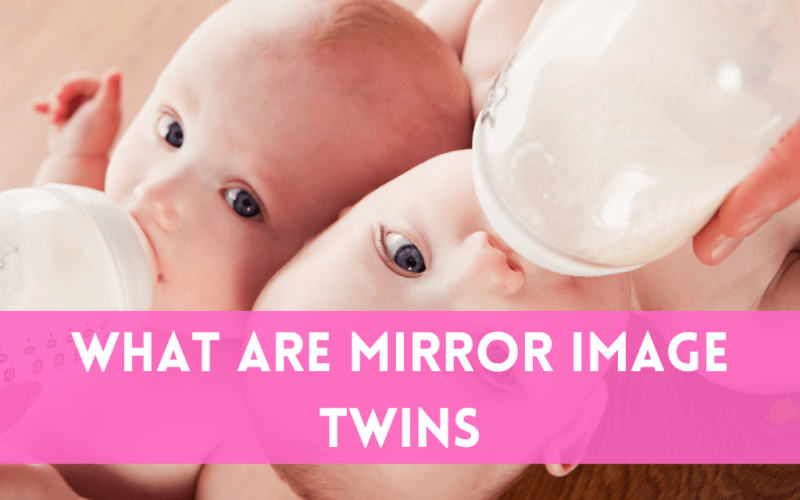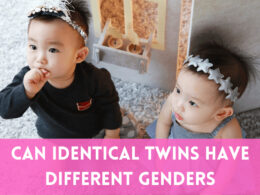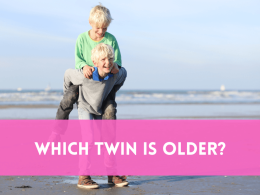While identical twins are rare, there’s another type that is even rarer than that called- mirror image twins. They have identical features but in different ways. You can probably tell by the name but there’s more to unfold. Sounding a bit confusing? Let us explain below each and every detail of mirror image twins!
What is Mirror Image Twins
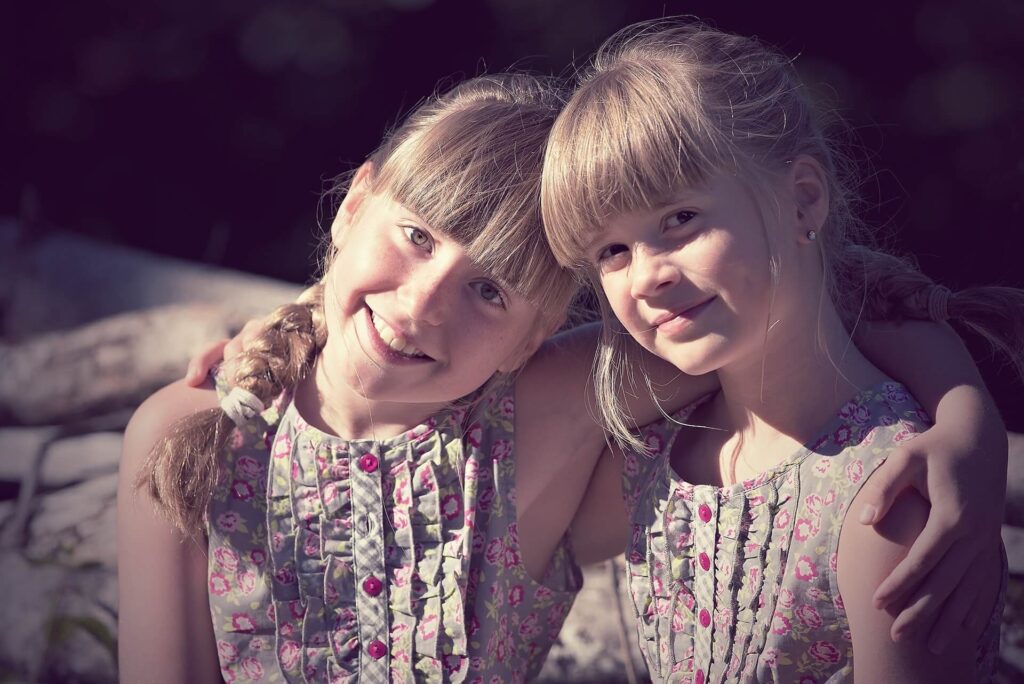
Mirror image twins are a type of identical twins. It challenges our usual idea of twins. When we think about twins, we typically think they are identical with everything similar. From features to voices to personalities. Mirror image twins have similar features but are on the opposite side. For example, usually identical twins may have a mole on the right cheek.
Mirror image twins will have a mole on the opposite sides of their cheeks. If one has a mole on the right side another will have it on the left side. So they are mostly like their name: Mirror image. They have similar things asymmetrically. Although it is rare to happen, it is still seen in identical twins. But it is important to note that they won’t be completely mirror images of each other in every aspect.
For example, some twins will have the same birthmark on opposite sides, some will have opposite personalities, and some will have the same mark on opposite sides. It is different and unique to twins. But that doesn’t make them any different than normal siblings. They might look a bit different but internally they are a different person.
Why Does it Happen
Why exactly mirror twins happen is yet to be discovered by science. The reason is not understood. And so far it is believed to happen randomly during early embryonic development. But there are a few theories that can answer the question somewhat indirectly.
1. Splitting of a Fertilized Egg
Mirror twins are identical. So they come from a single fertilized egg that splits into two embryos later in the womb. The timing and the way it breaks during early development can result in a mirror image including certain physical features.
2. Asymmetrical Division
When embryos first start to develop, the cells divide and differentiate to form two embryos. If the division is asymmetrical, it results in a mirror image of body features in the twins or their organs.
3. Chirality Genes
Some researchers have a theory that genes that are related to handedness, known as chirality genes, play a role in the occurrence of mirror twins. These genes could influence the development of handedness and other traits in a way that leads to mirror image reversal in twins.
4. Positioning in the Womb
The position of the embryo in the womb may also affect how mirror twins are made. For example, if the twins are positioned in a way that causes them to face each other, it could result in physical traits being reversed like a mirror image.
5. Environmental Factors
It is quite surprising that some environmental factors during the early stage might also affect the occurrence of mirror twins. Such as blood pressure, flow, and other external ones. But as the exact mechanism isn’t understood yet some scientists don’t believe it.
6. Random Chance
Lastly, it all comes down to probability. Only 25% of identical twins result in mirror twins. So we can say that it might happen due to a random chance.
7. Characteristics
There are a few noteworthy features of mirror-image twins that set them apart from identical twins. Some notable ones are-
8. Hair whirls
Mirror image twins may have hair whorls in opposite directions. If one twin has hair swirling clockwise, another one will have that anticlockwise. Usually, when they are little with soft hair you may not see this. But as hair grows out, it becomes noticeable.
9. Left-right Handedness
This is the least noticeable one. If one twin is right-handed, another one might be left-handed. But parents can only notice it once they start writing at school or at home. Parents can also notice that while they play. If they use one hand more than the other that might be the stronger hand.
10. Birthmarks or moles
Twins will have birthmarks in the mirror image position. Usually, these are asymmetric and sometimes have similar shapes. For example, if one twin has a mole on the right hand, another will have one at the same position on the left hand.
11. Same eye condition
If one twin has an eye condition in the right eye, another will have one in the left eye. It can happen with the shape of the eye too. If one has a smaller right eye, the other will have a smaller left eye.
12. Freckles and Dimples
This is something parents can notice as soon as they are born. Mirror image twins will have freckles and dimples in opposite positions. If one has a dimple on the right side, the other will have it on the left side. The same goes for the freckles. They will be asymmetrical.
13. The Shape of Nostrils and Ears
Shapes of nostrils and ears will be asymmetrical. The ridges and bumps of the right ear will appear on the left ear of the other twin. The nostrils will also be in the reverse direction.
14. Reversed Organs
In some cases, mirror-image twins can also have reversed organs. It is a rare condition called situs inversus. In this case, the organs like the heart or liver are found on the opposite side of the normal anatomy.
15. Reversed Personality
In some rare cases, they will have opposite personalities. This happens because of the same condition in the DNA that made the aforementioned cases possible. If one twin crosses legs on the right side another will cross their legs on the left side. If one twin is an introvert, another will be an extrovert.
16. Psychological Features
With a topic that is still under-researched, there’s so little can be said about it. But there has been a unique study on mirror twins about their sleep patterns. And according to that, mirroring is also observed in their sleep patterns.
Difference between Mirror Image Twins and Identical Twins
Misconceptions
Since this is a rare condition it has some misconceptions and myths surrounding it. It is important to know about the misconceptions so that we can identify them and stay informed with authentic information. A good way to be informed on twin things is through fun and interactive books. One such is a graphic novel called Twins! Some of the misconceptions are stated below.
- They are mirror images of each other: While mirror twins might show some mirror image reversal of physical traits, they are not exact mirror images of each other in all aspects or characteristics. They can have differences in personality, preferences, and other individual characteristics, just like any other siblings.
- They have reversed internal organs: While some physical traits, such as the asymmetry of organs or anatomy or features, can be reversed in mirror twins, it is not always the case. Internal organ placement is complicated and determined by various factors during the initial development of the fetus, and mirror twins may or may not have reversed internal organs. It is also very rare to have this condition.
- They have speech difficulties: While it is true that some mirror twins have asymmetric or mirror-imaged speech patterns, known as mirror speech or reverse speech, it is important for us to remember that not all mirror twins have speech difficulties. Mirror speech is a rare condition and does not necessarily mean speech difficulties or language impairments.
- They have special health issues: Mirror twins are not known to have any specific health issues because of their unique physical characteristics or reversed traits. They typically lead healthy lives and don’t need any special medical attention due to being mirror twins. They are like identical twins with unique features but no special care unless mentioned.
- They have telepathic abilities: There is a common myth that mirrors twins have telepathic abilities or a special psychic connection. This is a no-brainer that it is a myth. There is no scientific evidence to support such claims and mirror twins do not possess any supernatural or paranormal abilities. They are just like normal siblings without any abnormal ability that sets them apart from normal people.
- They are always left-handed and right-handed: While mirror twins may have this characteristic of being asymmetric-handed, where one twin is left-handed and the other is right-handed, it is not a universal trait among all mirror twins. Just like any other twins, mirror twins can have hand dominance preferences or they might not have any significant hand preference.
- They are extremely rare: While mirror twins are relatively rare, occurring in about 25% of identical twin pregnancies, they are not completely rare. There are many other types of twins and multiple births, and mirror twins represent a unique but not uncommon phenomenon.
Related article: The 16 Books For Twins To Read To Them During Bedtime
Differences Between Identical Twins and Mirror Image Twins
Identical twins are monozygotic twins. They are twins who originate from a single fertilized egg that splits into two embryos. Mirror twins are a type of identical twins who have some mirror image reversal of certain physical traits or what we previously called asymmetric traits. Here are the main differences between identical twins and mirror twins:
Identical twins have the same type of genes and have very similar physical traits, such as facial features, hair color, and eye color. Mirror twins, on the other hand, have some mirror image reversal of physical traits, such as having birthmarks on opposite sides of their bodies, reversed placement of organs, or other physical asymmetries. Identical twins may or may not have the same handedness, just like any other siblings. Mirror twins, however, are more likely to have reversed handedness, where one twin is left-handed and the other is right-handed.
Moreover, identical twins are the most common type of twins making up about one-third of all twin pregnancies. Mirror twins, on the other hand, are relatively rare. Only 25% of identical twin pregnancies are mirrors.
Identical twins and mirror twins can have individual differences in personality, preferences, and other characteristics. Although identical twins share the same genes, they may still show differences in their upbringing, experiences, and environment, which can mold their individuality. Mirror twins, in addition to their unique physical traits, may also have individual differences.
Conclusion
Some of the features sound quite unique and some might be worrisome. But parents should know that the phenomenon is extremely rare. Being a mirror twin is actually very fun too.
They grow up with unique features that are rare. Here’s a fun video between two mirror twins who try to figure out if they have telepathy power.


